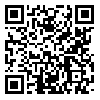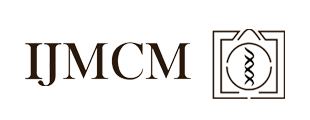
International Journal of Molecular and Cellular Medicine (IJMCM)
Cellular and Molecular Biology Research Center, Babol University of Medical Sciences
BibTeX | RIS | EndNote | Medlars | ProCite | Reference Manager | RefWorks
Send citation to:
URL: http://ijmcmed.org/article-1-2546-fa.html
Pediatric acute myeloid leukemia (AML) is biologically heterogeneous, necessitating integrated genetic and immunophenotypic profiling for precise diagnosis and risk stratification. We analyzed 74 pediatric AML patients diagnosed between 2012 and 2023 at Ali-Asghar Children’s Hospital, Tehran, Iran, via blood counts, bone marrow morphology, cytogenetic karyotyping, flow cytometry, and nested PCR for common fusion genes. In this study, the median age was 5.9 years (range, 0.5–17 years). Clinical presentations vary by cytogenetic subtype: t(15;17) is associated with bleeding, bruising, and fever; t(8;21) is associated with moderate fever and fatigue; inv(16) is associated with fatigue and minimal bleeding; trisomy 19 and duplication 5q often lack systemic symptoms; and cytogenetically normal cases present diverse symptoms, including fever, fatigue, weakness, and weight loss. The most frequent rearrangements were t (8;21) (n=9, 12.16%), t(15;17) (n=8, 10.81%), and t(9;11) (n=8, 10.81%), whereas t(1;22) (n=2, 2.70%) and inv(16) (n=1, 1.35%) were rare. Immunophenotyping revealed universal CD33 and CD45 expression (>90%), frequent CD34 positivity, the absence of HLA-DR and CD11b at t (15;17), and characteristic CD34/CD33 patterns at t(8;21). Our findings underscore the genetic and immunophenotypic complexity of pediatric AML and highlight the value of integrated diagnostics for risk-adapted therapy. Personalized treatment strategies may improve outcomes. However, multicenter studies are needed to validate these findings and identify novel therapeutic targets.
دریافت: 1403/11/21 | پذیرش: 1404/4/11 | انتشار: 1404/7/9
| بازنشر اطلاعات | |
 |
این مقاله تحت شرایط Creative Commons Attribution-NonCommercial 4.0 International License قابل بازنشر است. |



